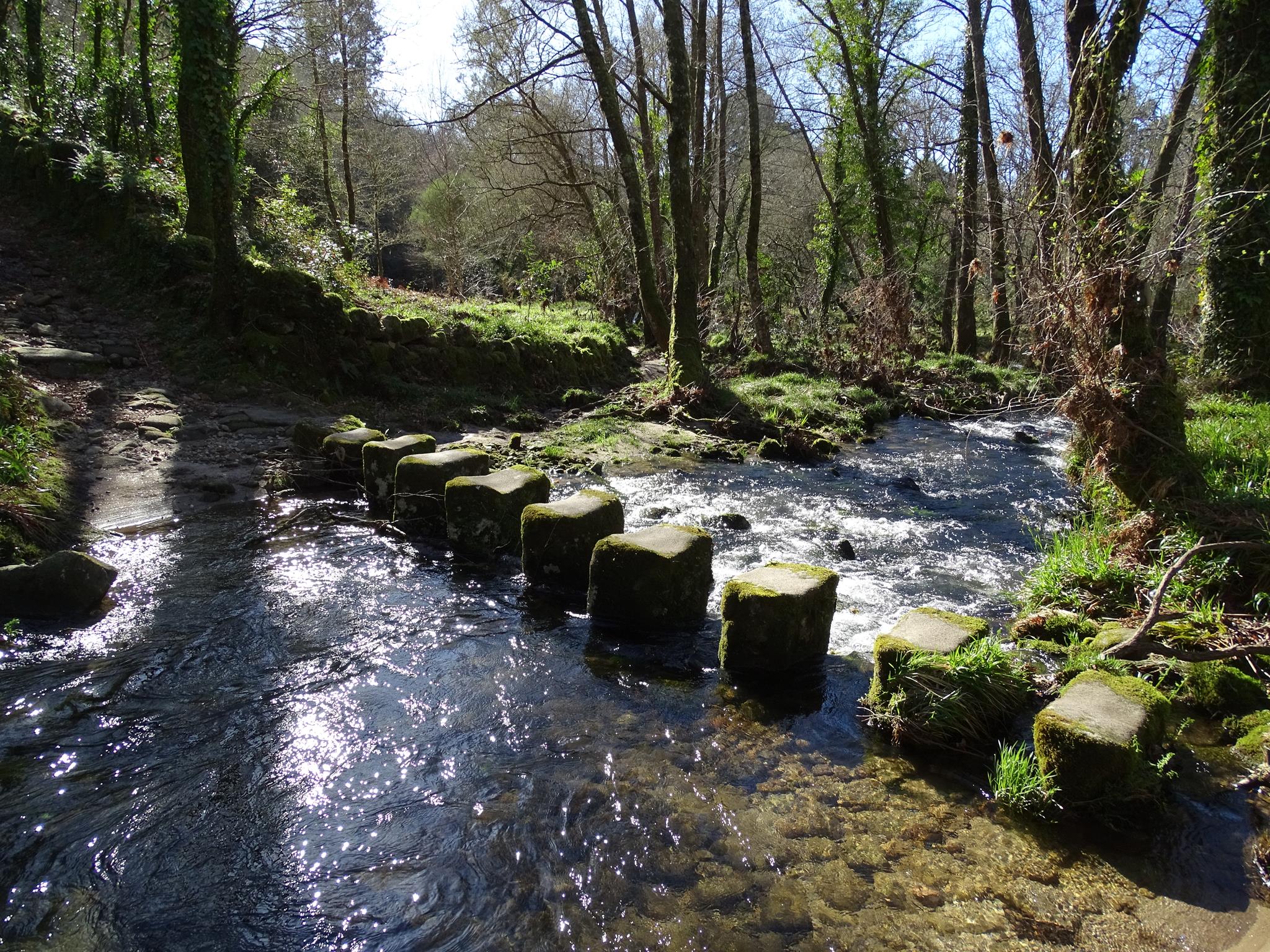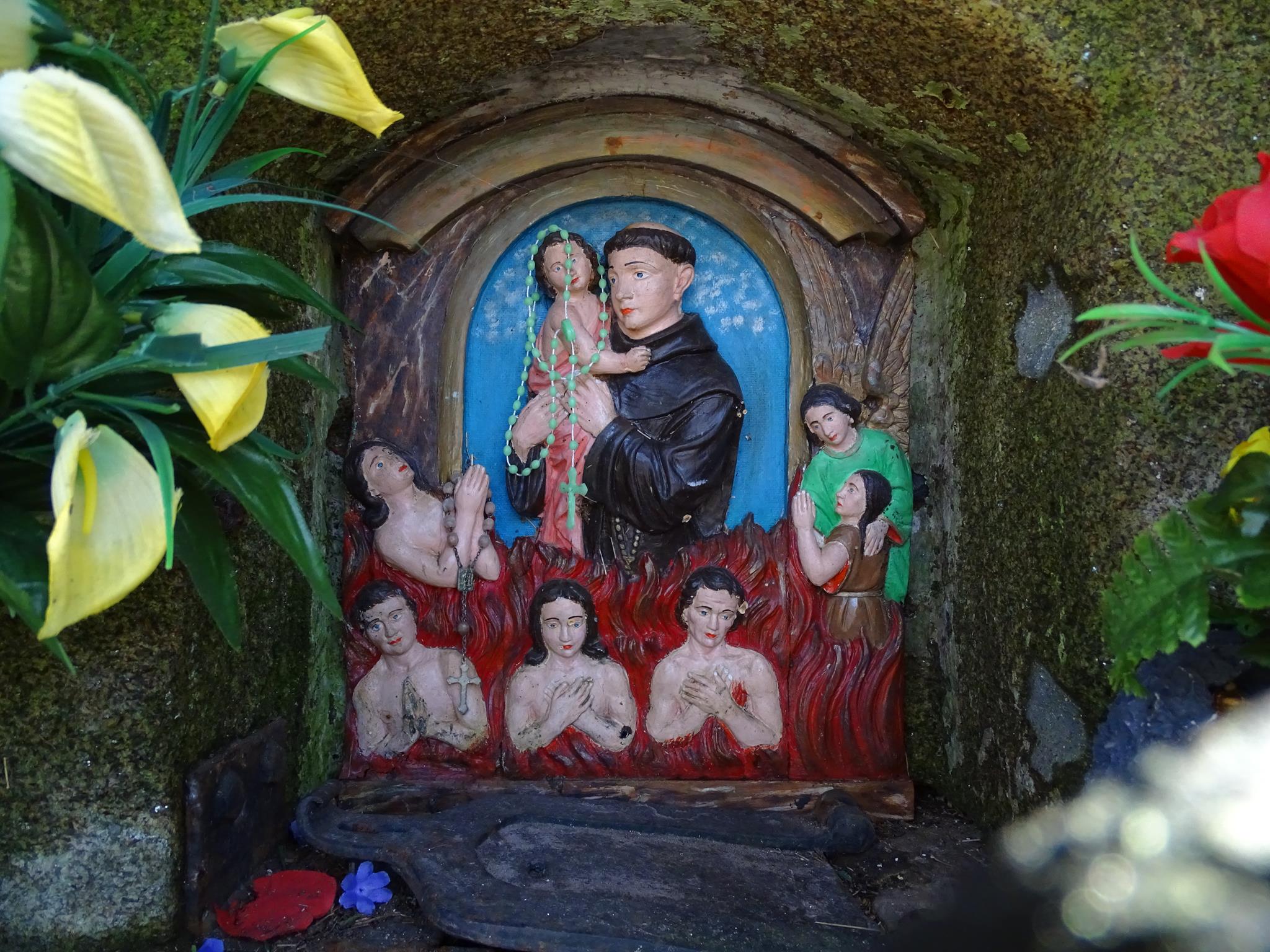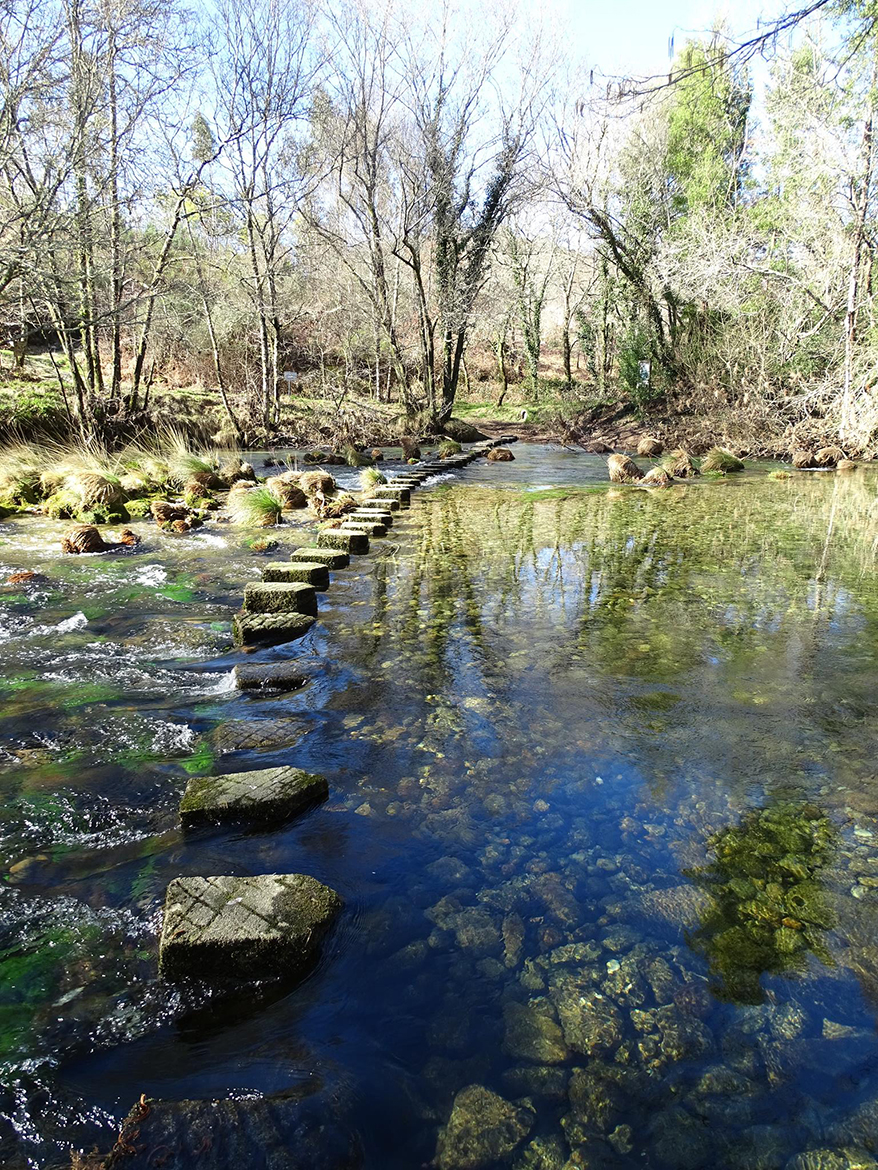Crossing of A Fraga and wayside shrine
The steps or stones are equidistant parallelepiped stones that were placed in natural fords of the rivers so that people could easily cross without getting wet. That is why the villages closest to the steps carry in their denomination “porto", which in Galician means "place of passage". In parallel to the passages there is a cobbled submerged road that facilitated the passage of animal drawn carriages. On the left bank of the river is a wayside shrine fitted into a low wall and divided into two sections separated by a straight moulding at the front. The first part is open and inside there is a small plaque with the name of the devotee who paid for its erection: Manuel Cabirta and Concha, residents of Laxoso de Abaixo. The main section has a rectangular alcove that inside resolves into a lowered arch. A moulded cornice separates it from the top of the pocket: a beautiful pedestal topped by a simple iron cross. The altarpiece, carved in wood, represents St Anthony releasing the young souls from the Purgatory. The polychrome highlights the torment of the flames. The box of alms is a fundamental part. On April 20th 1873, in the Rectory of St Baia of Ponte Caldelas, Manuel Cabirta, his wife María Concha and their children Xosé and Manuel delivered to the abbot of this parish, Antonio Martínez Peso, the key to this shrine that they built and financed on land owned by them. They trusted that the abbot would name a responsible person who would be in charge of collecting and delivering the alms so that it is destined to defray suffrages for the dead.




